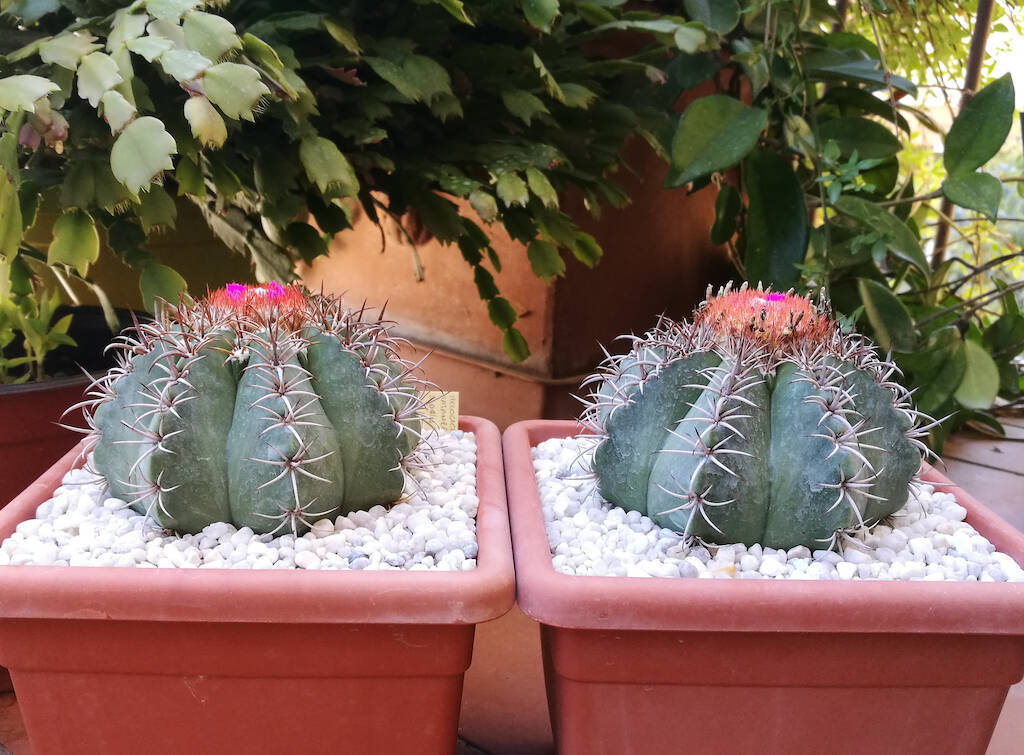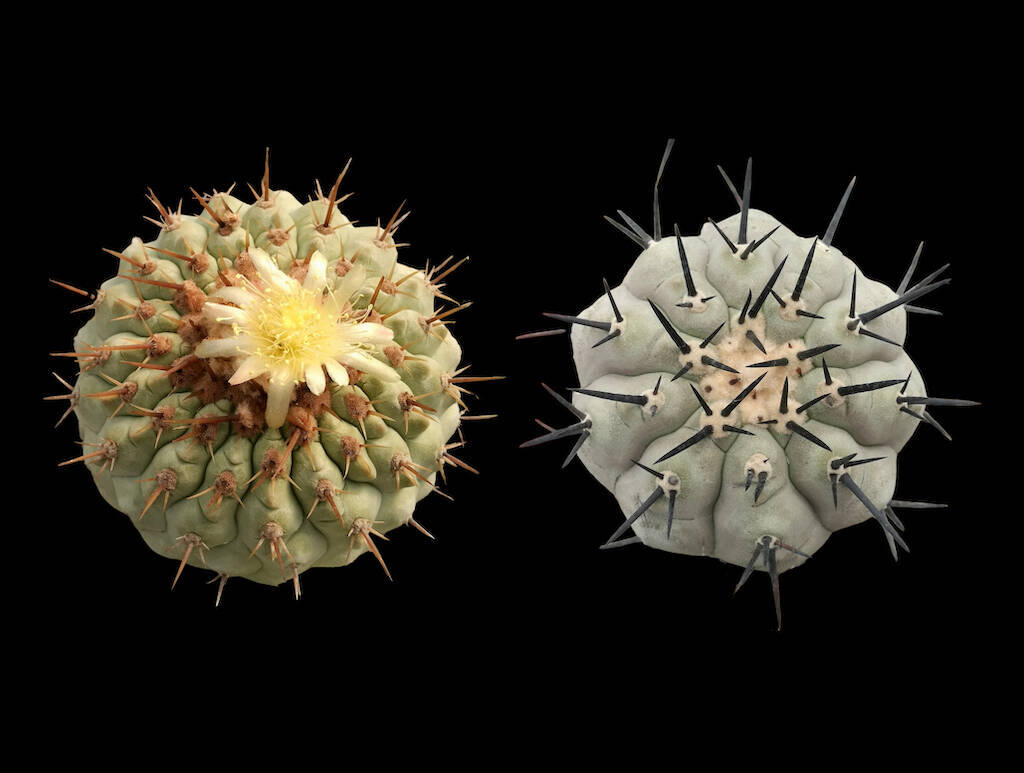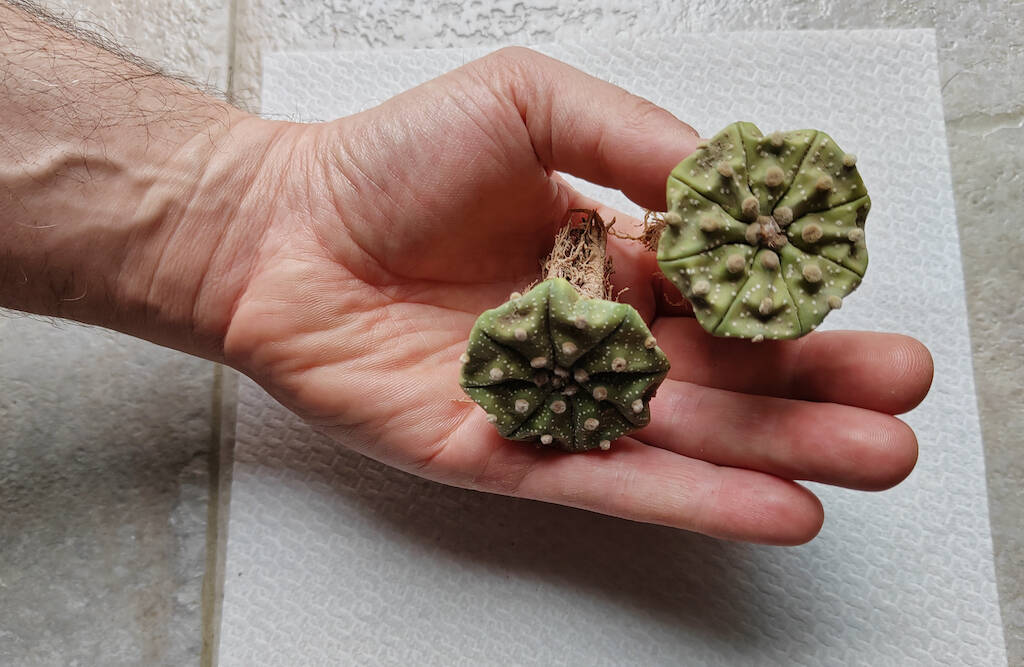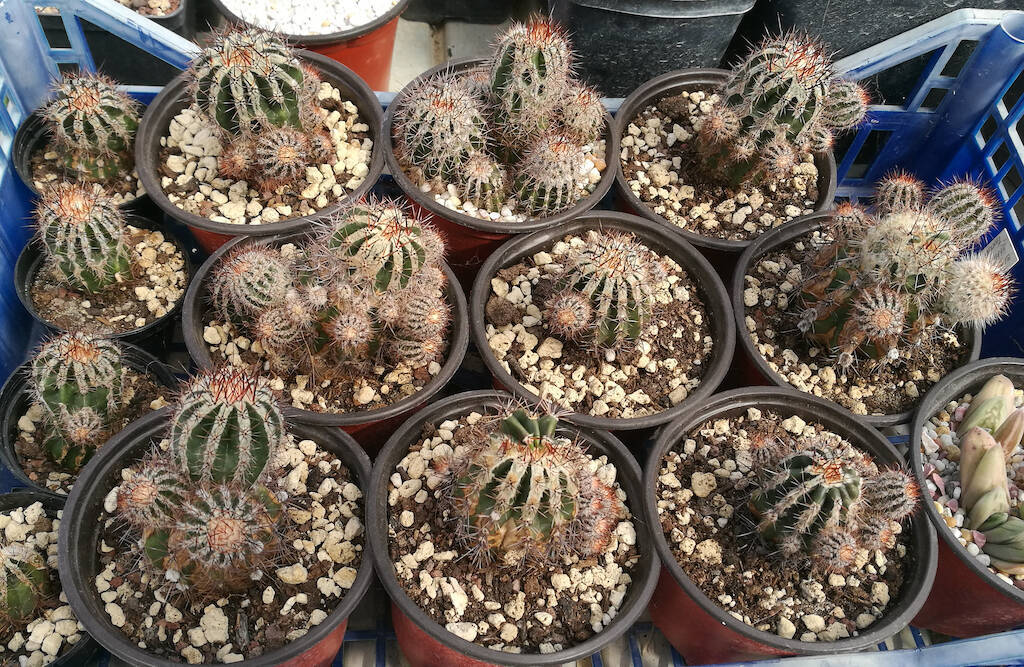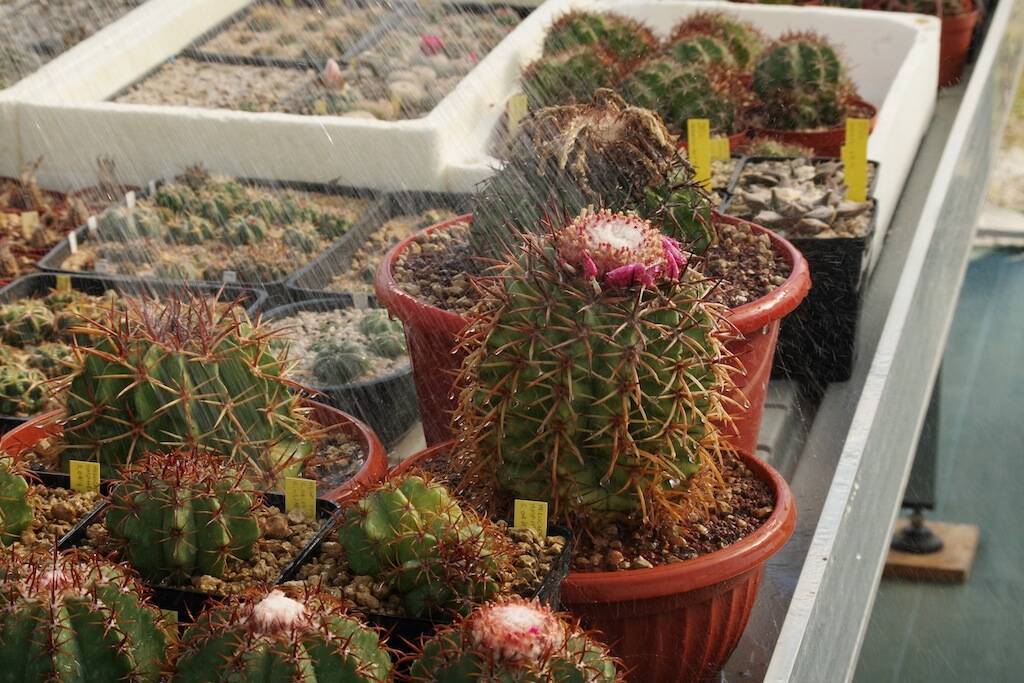In the great botanical family of the Cactaceae the Melocactus represent a small “case apart”. In fact, these are cacti with a traditional globular shape tending towards a shorter cylinder as they age, but they have a peculiarity: over the years they “put on their hats”. In other words, the apex of these plants stops growing and a sort of “headdress” takes shape in its place, made up of a compact fluff mixed with thick and very thin thorns, usually red but sometimes white. This is the cephalium and this is where the flowers and fruits will come from. In a very bizarre way, over time it is only the cephalium that grows in height, so much so that the stems remain the same size, while the “hat” stretches towards the sky, giving these plants a truly unique appearance. The “however” of this story lies in the ease with which these cacti lose their roots and, even if they have not been affected by rot or parasites, they start to die. In other words, a Melocactus in full health often begins to slowly deteriorate and die, perhaps even taking two years, just because the root system has gone haywire and the plant has not been able to produce a new one.
Those who have been cultivating cacti for some time know it well: Melocactus are as fascinating as they are “capricious” and you have to come to terms with it. In this article we deepen the knowledge with this genus, in particular from the point of view of the needs, so as to grow robust specimens and limit losses as much as possible. (…)
Continue reading “How to cultivate Melocactus, cacti that with age put on… the hat (“cephalium”)!”


